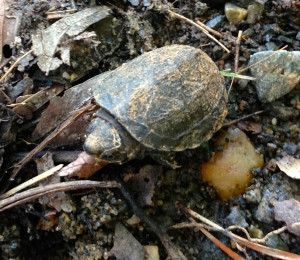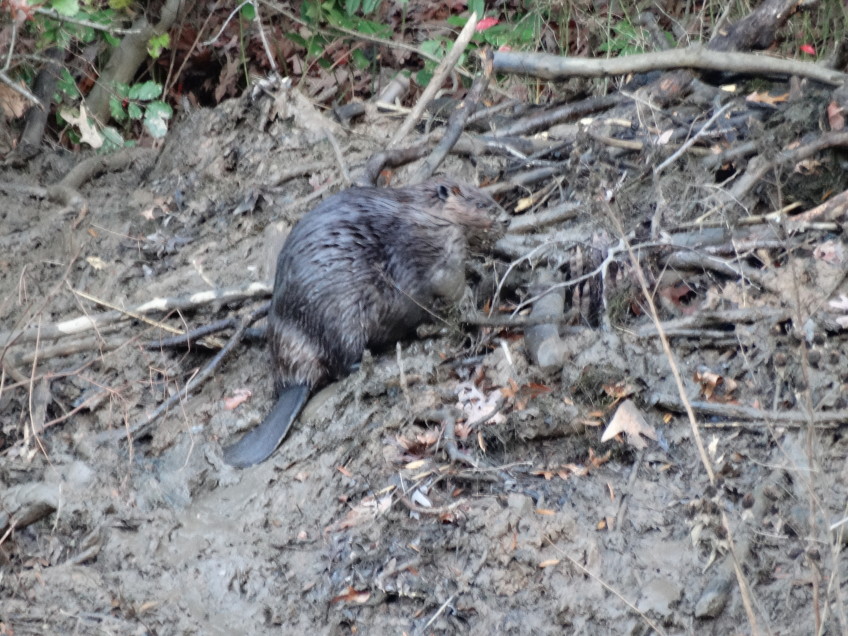At its meeting next Monday, February 8, the Greenbelt City Council is expected to authorize signing the documents needed to obtain permits to dredge the lake forebays to improve water quality. Council will get a chance later to specifically authorize the work after referring the plans to relevant city advisory boards.

Council was briefed on the project at a February 1 worksession. Work could begin as early as April; however, the actual start time will be likely to change based upon when the required permits are obtained as well as conditions imposed by Greenbelt, county and state officials to minimize the impact on wildlife, among other factors.
What’s a Forebay?
The forebays are the small ponds just outside the lake. One is located between the Braden Field access road and the lake; the other is located near University Square and Charlestowne North apartments. By catching runoff on its way to the lake and slowing it down, these forebays are designed to allow sediment to settle, so cleaner water reaches the lake.
According to Terri Hruby, assistant director of planning, the forebays should be dredged every 10 years. However, the forebay near Braden Fields was last dredged in 1999. The forebay near Lakecrest Drive has never been dredged. As a result, the forebays have collected so much sediment that they are ineffective, according to Soltesz Engineering, as well as two previous studies by city contractors.
What is Planned?
Neil Weinstein, executive director, Low-Impact Development Center, explained why the work is needed. Sediment carries a lot of phosphorus from fertilizers and other sources. This phosphorus, which now gets into the lake rather than settling in the forebays, makes the lake “green, smelly and slimy.” After dredging, sediment will once again settle out before runoff reaches the lake, thus improving water quality.
Ken Dunn, managing member of Soltesz, said the plan is to remove 2,400 cubic yards of sediment. They will retain the trees on the edge of the forebays to the extent possible, though some will be removed to make room for the equipment. Vegetation on the banks will be removed and replaced when the work is done.
Workers will remove and transport as many amphibians (frogs, toads and salamanders) as they can find to other areas of the lake. When the work is completed, they will be moved back to the forebays.
Dunn said that it is essential that most of the mammals in the area leave the forebays during the work and some initial destruction of their habitat provides the impetus to achieve this naturally. He observed, however, that the animals are used to such temporary disruptions and will come back, noting he has removed beavers from storm water management areas only to have them return the following year.
Peter Littleton, operations manager at Corvias Solutions, projected that the work would take about three months following an extensive vetting process including county regulatory review, state regulatory review, Greenbelt regulatory review and review by the U.S. Soil Conservation Service. The project will then be reviewed by the Maryland Department of the Environment, which will provide regulatory oversight and can impose conditions such as when work can be done to minimize the impact on wildlife.
Roberts questioned the need for and scope of the work. He did not want the beaver dam torn out and was concerned about the planned maintenance. He described his experience at another location where trees and aquatic plants were removed under the guise of maintaining the pond.
Dunn said that by monitoring sedimentation levels and performing more timely maintenance, there would be less impact than allowing the forebays to fill until the point of failure.
Dunn initially said that if council approved submitting the permit application and related documents on February 8, he potentially could have a permit by March 1 and work could start in early April.
Councilmember Judith Davis objected to that timeframe, saying it would disrupt egg laying and births of wildlife in the area. She urged waiting until the young had a chance to become half-grown. She also suggested retaining the dam materials and returning them to the site at the completion of the work in hopes that the beavers would re-use them instead of cutting down additional trees.
Littleton said that the timing of the project could be altered to work around these concerns but recommended either spring or fall to facilitate reestablishment of the vegetation in the forebays.
Roberts asked why the sediment could not be pumped out, instead of dredged, as is done at the beach. Weinstein said that mud is too heavy to be pumped. Roberts was not convinced.
To reduce impact on lake neighbors, work will generally be done during normal business hours on weekdays.
Background
The work will be led by Corvias under its Clean Water Partnership (CWP) with Prince George’s County. A county press release states that the partnership is the first “municipality” to adopt the U.S. Environmental Protection Agency’s (EPA) Community-Based Public-Private Partnership Model to address storm sewer system compliance requirements. Corvias is charged with retrofitting 2,000 acres of impervious surfaces using green architecture over three years. The county can extend the agreement for an additional three years and 2,000 acres if it is satisfied with Corvias’ progress. The company will be responsible for maintaining the projects for 30 years with Prince George’s County responsible “in perpetuity,” Littleton said. This is likely to be just the first step as federal clean water regulations require the county to treat 15,000 acres of polluted runoff by 2025.
The project will be funded through the county’s Storm Water Utility Fee (also known as the “rain tax”) and will cover a drainage area of nearly 500 acres, roughly 160 of which are impervious, according to Dunn. His company is one of the engineering firms the CWP is working with to identify and verify projects and to manage their design. Even pervious surfaces bring some sedimentation to the lake, he added.
City Manager Michael McLaughlin said that the city has been informed that the long-planned work to dredge the lake itself does not qualify for funding under the CWP. He said that he does not foresee the city being able to fund dredging the entire lake in the near future due to the high costs. Five years ago the estimated cost was $1 million.
The CWP representatives were open to Councilmember Edward Putens’ suggestion to put some educational information on the construction fence explaining what is being done and the timeline for completion. Littleton suggested that they could also install permanent educational signs about how a forebay works. Council appeared to like this idea.
Priorities
Councilmember Rodney Roberts questioned the need and science behind the project, saying that the addition of the beaver dam in one of the forebays has improved its ability to filter storm water. He would rather spend money addressing runoff from the “oceans of asphalt parking lots” in the city. Neil Weinstein, executive director of the Low Impact Design Center, said that the CWP has plans for thousands of small projects implementing Best Management Practices, mostly involving some form of filtering mechanism, either natural or manmade. However, they cannot work on private property unless it is owned by a faith-based or non-profit entity. Weinstein said the forebay project is a cost-effective way to retrofit a lot of acreage with one project.
Outreach
Littleton said that the CWP can also work with faith-based and non-profit organizations. Although such organizations are exempt from taxes, they are not exempt from the storm water utility fee. If they authorize the county to install filtering devices on their property they can get an instant rebate of half of their storm water fee, he said. In addition, the county’s Department of Environment has programs for homeowners. The Greenbelt Advisory Committee on Environmental Sustainability (Green ACES) is planning to distribute information regarding the programs for homeowners.
Tasha Brokenberry, community outreach manager for Corvias, said the company will work with homeowners associations and others to keep them informed of the work in advance and with churches to inform them of the opportunities to meet their responsibilities through the CWP. In addition, the partnership has goals for involving local small and minority businesses.
Next Steps
Based on their comments, it appears likely that on Monday, February 8, council will authorize the city to approve the documents that must go forward for permitting and to refer the dredging project to Green ACES and the Park and Recreation Advisory Board for review. To conserve time, council is likely to recommend a joint report to be completed within a specified time period.


